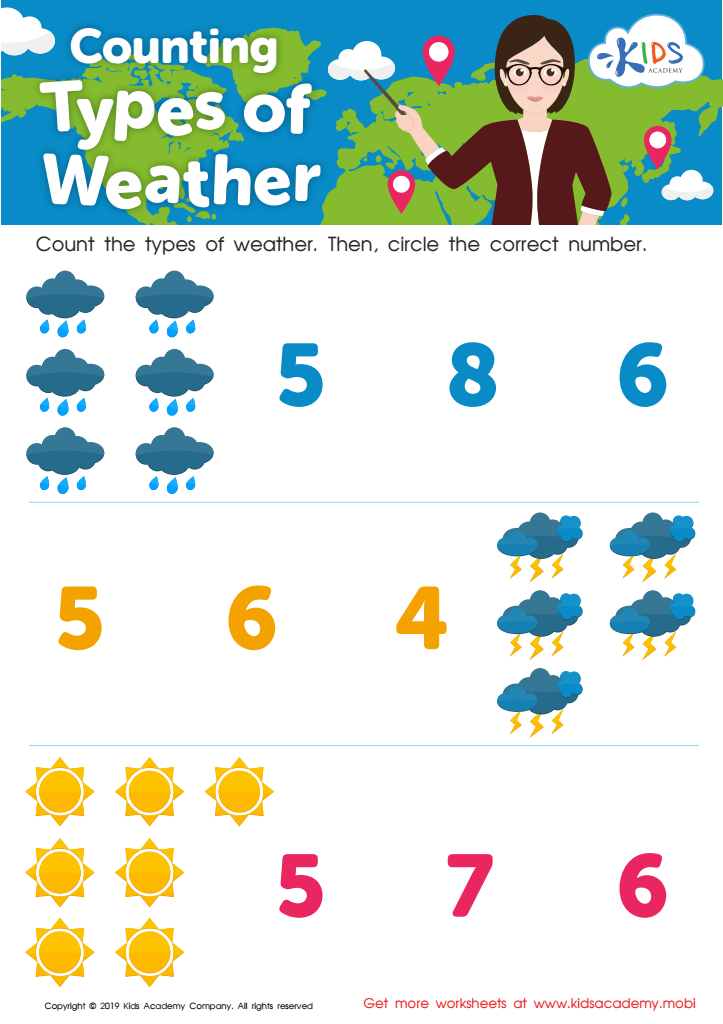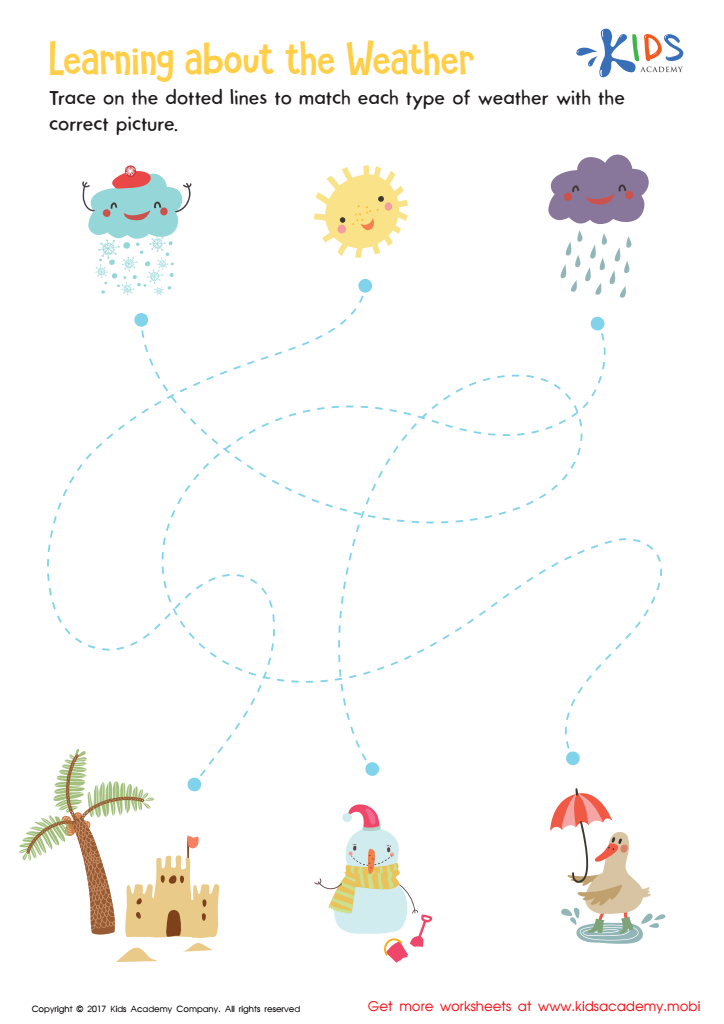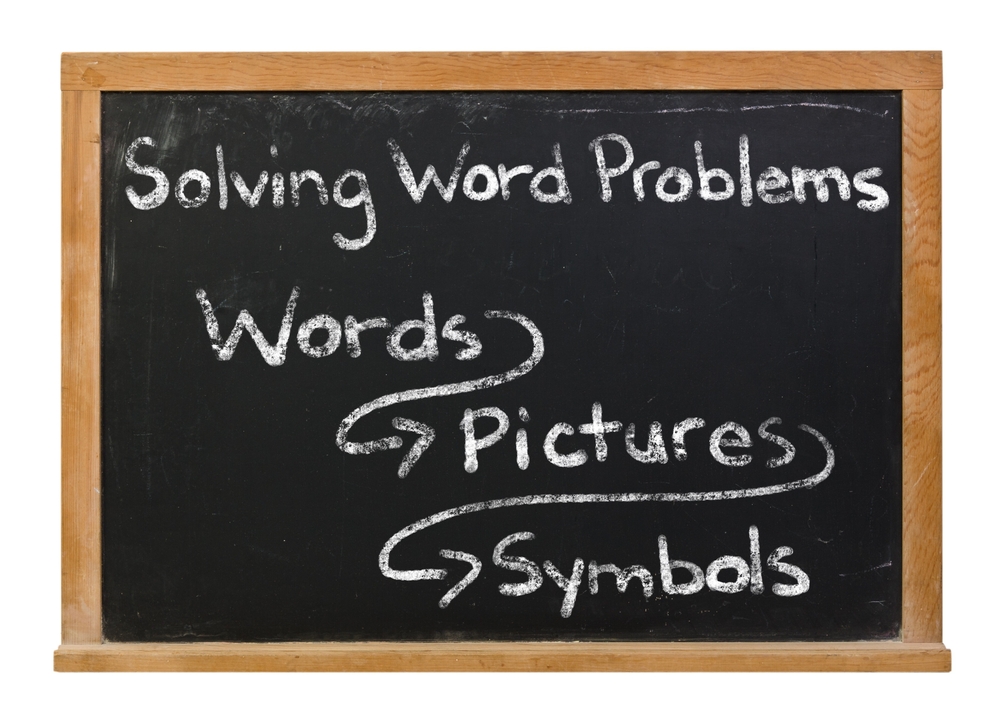Weather identification Math Worksheets for Ages 5-6
3 filtered results
-
From - To
Discover our engaging Weather Identification Math Worksheets, designed specifically for children ages 5-6. These worksheets are perfect for early learners to understand weather concepts while enhancing their math skills. Through fun and interactive activities, kids will identify different weather conditions, count weather-related items, and learn basic math operations. Each worksheet blends weather themes with fundamental math principles, ensuring kids stay engaged and excited to learn. These educational resources support cognitive development and enhance problem-solving skills, making learning both fun and effective. Prepare your child for academic success with our Weather Identification Math Worksheets!


What's the Weather Like? Worksheet


Counting Types of Weather Worksheet
Weather identification and associated mathematical activities play a crucial role in the education of children aged 5-6. At this developmental stage, youngsters are naturally curious about the world around them and tend to ask numerous questions. Taking advantage of their curiosity, parents and teachers can harness weather identification to nurture foundational math skills.
Firstly, weather observations enhance cognitive development. By documenting weather patterns, children learn to classify, sequence, and compare different elements of weather such as temperature, precipitation, and wind conditions. This activity strengthens critical thinking and encourages attention to detail.
Secondly, integrating math into weather identification reinforces numerical and spatial concepts. For example, tracking temperature variations can introduce basic counting, number recognition, and simple addition or subtraction. Making graphs or charts of weather conditions further develops their ability to interpret data visually, laying down early concepts of geometry and statistics.
Lastly, developing observational skills and curiosity about the weather fosters a sense of environmental awareness. By regularly discussing weather, children also learn important vocabulary and communication skills, enriching their language development.
Through integrating weather identification and math, parents and teachers provide meaningful, hands-on learning experiences that lay a solid foundation for both academic and everyday life skills in young children.
 Assign to My Students
Assign to My Students

















